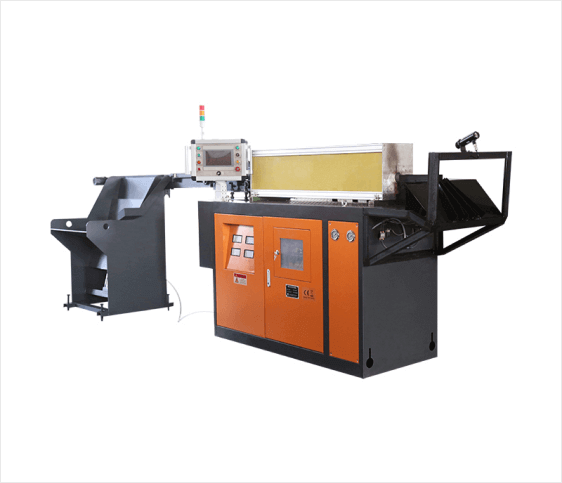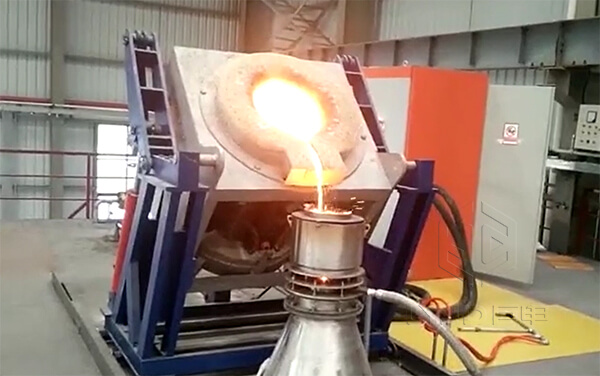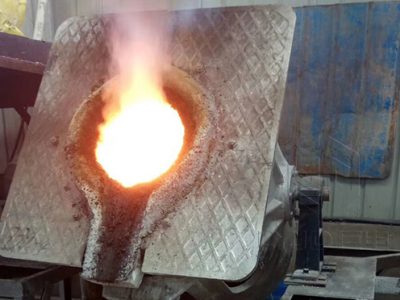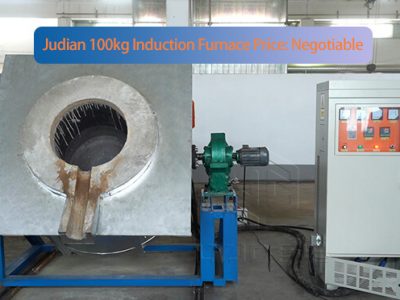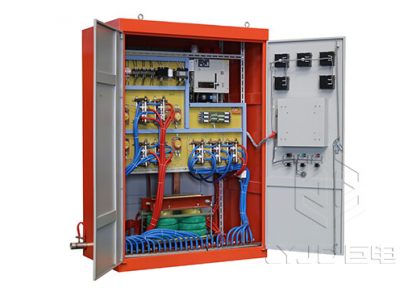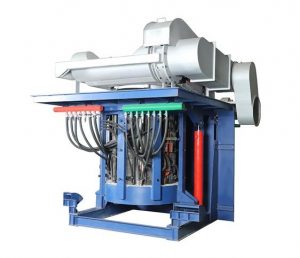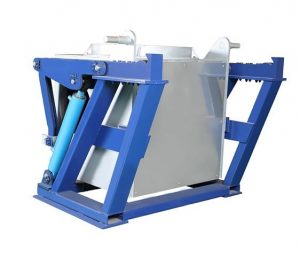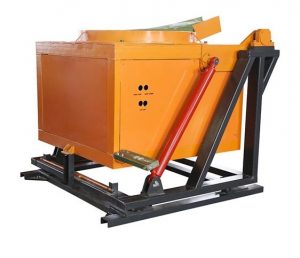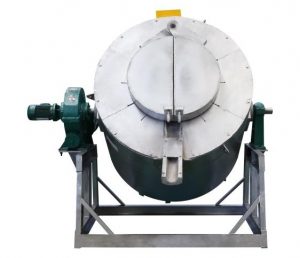An induction foundry furnace is a type of furnace used in metal casting processes, particularly for melting and pouring various types of metals. It utilizes the principle of electromagnetic induction to generate heat within the material being melted.
How an Induction Foundry Furnace Typically Works?
Principle of Induction
The furnace consists of a crucible or a container made of refractory material where the metal to be melted is placed. The crucible is surrounded by a coil made of copper or another conductive material.
Power Supply
An alternating current (AC) power supply is connected to the coil, which creates a rapidly alternating magnetic field around the crucible.
Induced Current
The rapidly alternating magnetic field induces electric currents, known as eddy currents, within the metal charge in the crucible.
Heat Generation
The eddy currents circulate through the metal charge, and due to the electrical resistance of the metal, they generate heat through a process called Joule heating. This heat gradually raises the temperature of the metal, causing it to melt.
Temperature Control of Induction Foundry Furnace
The power supplied to the furnace can be controlled to adjust the heating rate and maintain the desired temperature. Temperature sensors and control systems are often used to monitor and regulate the temperature during the melting process.
Pouring and Casting
Once the metal is fully melted, the crucible can be tilted or lifted to pour the liquid metal into molds or casting equipment for further processing.
Types of Induction Foundry Furnaces
Induction foundry furnaces can be categorized into two main types based on the frequency of the alternating current used.
High-Frequency Induction Foundry Furnaces
These furnaces typically operate at frequencies ranging from a few kilohertz to a few tens of kilohertz. They are commonly used for melting non-ferrous metals such as aluminum, brass, bronze, and precious metals.
Medium-Frequency Induction Foundry Furnaces
These furnaces operate at frequencies ranging from a few tens of kilohertz to a few hundred kilohertz. They are suitable for melting both non-ferrous and ferrous metals like steel and iron.
Crucible Design
The crucible used in an induction foundry furnace is usually made of a refractory material that can withstand high temperatures. Common materials include graphite, clay-graphite, silicon carbide, or ceramic-coated materials. The crucible is designed to resist chemical reactions with the melted metal and to contain the molten metal without leakage.
Efficiency
Induction furnaces are known for their high energy efficiency. Since the heat is generated directly within the metal charge, there is minimal heat loss to the surrounding environment. The electromagnetic induction process allows for rapid and uniform heating, reducing the overall melting time and energy consumption.
Melting Capacity
Induction furnaces come in various sizes and capacities to accommodate different production requirements. Small-scale induction furnaces may have a melting capacity of a few kilograms, while large industrial furnaces can melt several tons of metal in a single batch.
Safety Considerations
Induction furnaces have safety features to prevent accidents and ensure operator protection. These may include cooling systems to prevent overheating, electromagnetic shielding to reduce electromagnetic radiation, and safety interlocks to control access to the furnace during operation.
Applications
Induction foundry furnaces are widely used in various industries, including automotive, aerospace, jewelry, and general metal casting. They are used for melting and casting processes such as die casting, investment casting, sand casting, and continuous casting.
At Last
Induction foundry furnaces have revolutionized the metal casting industry by providing efficient, precise, and environmentally friendly melting solutions. Versatility, energy efficiency, and ability to handle a wide range of metals make them a popular choice for many foundries.
